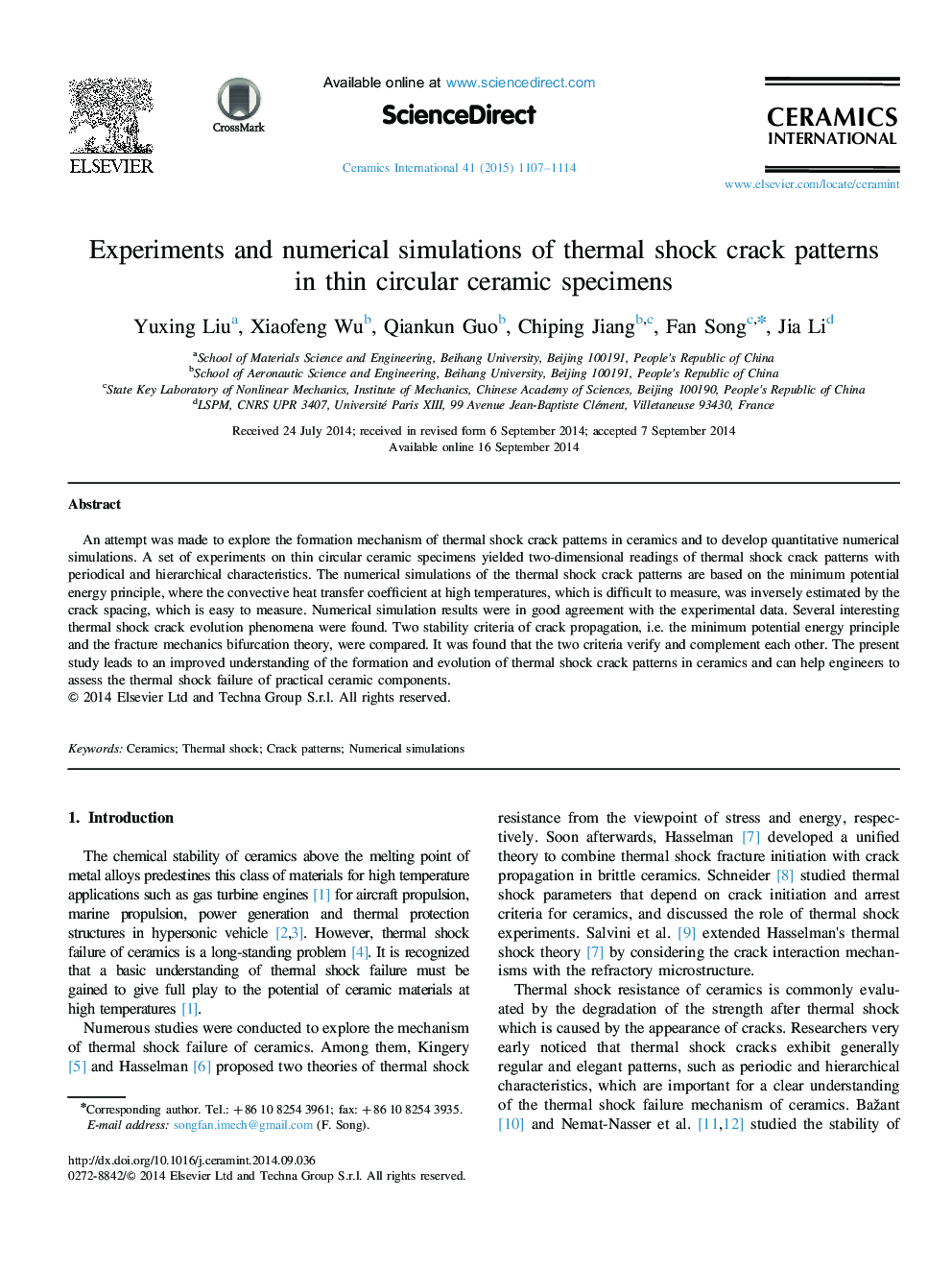| Article ID | Journal | Published Year | Pages | File Type |
|---|---|---|---|---|
| 1460806 | Ceramics International | 2015 | 8 Pages |
An attempt was made to explore the formation mechanism of thermal shock crack patterns in ceramics and to develop quantitative numerical simulations. A set of experiments on thin circular ceramic specimens yielded two-dimensional readings of thermal shock crack patterns with periodical and hierarchical characteristics. The numerical simulations of the thermal shock crack patterns are based on the minimum potential energy principle, where the convective heat transfer coefficient at high temperatures, which is difficult to measure, was inversely estimated by the crack spacing, which is easy to measure. Numerical simulation results were in good agreement with the experimental data. Several interesting thermal shock crack evolution phenomena were found. Two stability criteria of crack propagation, i.e. the minimum potential energy principle and the fracture mechanics bifurcation theory, were compared. It was found that the two criteria verify and complement each other. The present study leads to an improved understanding of the formation and evolution of thermal shock crack patterns in ceramics and can help engineers to assess the thermal shock failure of practical ceramic components.
